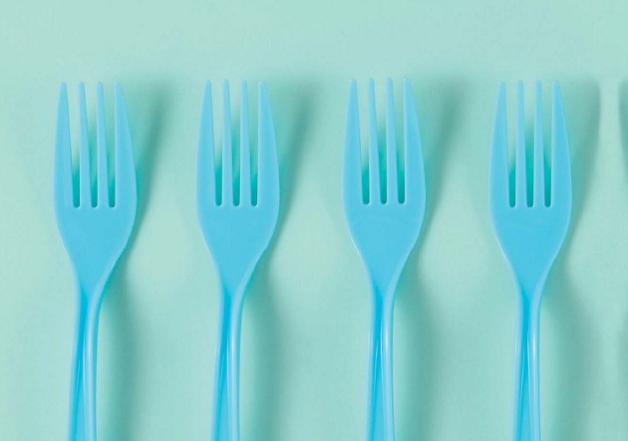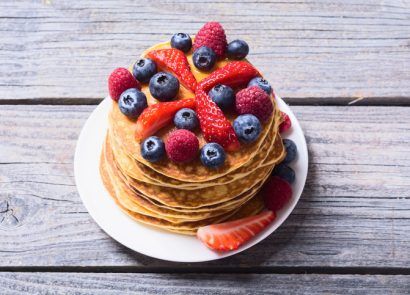Are you consuming more calories than you think you are?
Do you know how many calories you’ve eaten today? Alarmingly, it seems that us Brits are underestimating our calorie intake by 50 percent, according to the Office of National Statistics – with women in the study claiming that they consumed an average of 1,570 calories a day, but actually eating 2,393 (the recommended amount is 2,000)! “Eating an extra 200 calories a day for one year is enough to increase your body weight by 20lbs,” warns Karline Porter, nutritionist at Doctify (doctify.co.uk). So, what could be causing the problem? We asked the experts where those sneaky extra calories could be lurking – and what we can do about it.
Why is this happening?
How is it possible that we can be calculating our calorie intake so badly? “Underestimating the amoun of calories we eat everyday happens so frequently mainly because it’s hard to keep track of everything we put in our mouths,” explains Charlotte Stirling-Reed, nutritionist for Superdrug (superdrug.com).
“Often we eat on the go somewhat mindlessly, without really thinking about what we’re eating or how it’s making us feel. It’s also really easy to forget a lot of the foods and drinks that all add up throughout the day, for example butter on sandwiches, a side of chips, or that latte you drank on your way to work. When we live busy lives, all the little extras can be missed.”
There are other problems, too, as James Collier, nutritionist and founder of Huel (huel.com) tells us. “Underestimating calorie intake happens for a number of reasons, and it’s usually because people aren’t judging their portion sizes correctly, or they’re under-reporting how much they’ve eaten to make themselves feel better,” he says. On the other hand, you may not know how many calories are in the foods you eat. “There are hidden calories in daily food choices from coffees and smoothies to salad dressings and oils,” says Emma Brown, nutritionist at Nutracheck (nutracheck.co.uk). “All these calories go unnoticed, but quickly add up. An easy way to find out what you’re eating is to use a calorie counting app, such as Nutracheck.”
What can we do about it?
Public Health England (PHE) has instigated its new One You campaign to tackle childhood and adult obesity. “To do this, they’re advising that we follow the 400/600/600 rule of thumb and have 400 calories at breakfast, 600 at lunch and 600 at dinner,” explains wellness blogger Dr Hazel Wallace (thefoodmedic.co.uk). “Snacks and drinks should make up the remaining calories as current recommendations suggest men should consume 2,500 calories and women 2,000 per day. However, it’s important to remember that low calorie does not always equal healthy, and the quality of the food is just as important as the quantity of calories. I think it’s important for people to be somewhat aware of the calories in foods but I don’t think calorie counting is for everyone, and I don’t think it helps people develop a healthy relationship with food,” she says.
James agrees, adding that if you want to lose weight, calories do matter, but they are only a small part of the picture when it comes to nutrition and health. “Nutrient quality is paramount,” he says. “You would certainly lose weight on 1,200 calories of cake, biscuits and crisps, but you’d be hungry, low on energy and at risk of nutrient deficiencies. Calorie counting rarely helps people shift the pounds in the long term. The key is to be calorie-aware instead.”
Charlotte also doesn’t recommend counting calories to obsession (“sometimes that can be overbearing and take the enjoyment out of foods”), but she does suggest being mindful of all the extras – including alcohol – and spend more time sitting down to appreciate what you’re eating every day. “Try to take breaks for food, and avoid working over lunch,” she says. “It can also really help to have a glance at food labels so that you can roughly work out if your meals do fall in line with the government’s new recommendations. If they don’t work for you and you prefer to eat your meals in a different way then don’t stress, as this is only a guide. Keeping a food diary for a few days can help you to see everything that you’re eating and may be more realistic than you trying to recall everything you ate at the end of the day. This can also help you to see where you can make small changes to your everyday diet if that’s what you’re looking to do. Most importantly though, remember to enjoy your foods and appreciate every bite that you’re putting into your mouth.”
Nutritional therapist Claudia le Feuvre (happyinbody.com) agrees with the idea that we should all be more mindful. “I propose becoming more conscious about how we eat, our eating speed and the rhythm of our meals, as well as what we’re actually eating,” she says. “It means understanding the ingredients of foods. If you want to generally reduce your calorie content in a more mindful way, some simple changes can make a big difference. For example, swap sugary granola for oatmeal, a fruity yoghurt for plain (you can add your own fruit), saucy masala for chicken tikka, mashed potatoes for mashed cauliflower, a snack bar for a handful of almonds, or ice cream for a frozen banana.”
Hidden calories
Whether you’re counting calories or not, some foods contain hidden ones that can accumulate quickly, leading to weight gain. Here are ones to keep an eye on:
Breakfast cereals: It may surprise you to learn that cereals have a lot of calories – the recommended portion size is around 30g, but many of us exceed this.
Takeaway coffees: “A large latte with syrup from your favourite coffee shop could set you back around 560 calories,” says Emma. Try having a black Americano instead.
Nuts: “Nuts are a great source of protein and fats but they are very calorific,” says Faye Townsend, head nutritionist at Protein World (proteinworld.com). “You could easily consume over 500 calories eating these. To get the benefits of nuts without the added calories, stick to just one handful which is only 160 cals.”
Smoothies: “A fruit smoothie is a great source of vitamins, but contains over 130 calories for a 250ml serving,” Emma explains. If you want a smoothie, blend together vegetables for less calories.
Salad dressing: The difference between a healthy salad with a dressing and one without can be up to 200 calories. “What may seem like a better option often is high in fats and sugars,” says Faye. “Instead, opt for low calorie ones such as vinaigrettes.”
Cooking oil: “These can pack up to 123 calories per tablespoon, which is why it’s vital to measure oil out,” Emma warns.
Ready meals: “Despite knowing that these aren’t the best option, people choose them for convenience,” Faye tells us. “But do people know how calorific they are? Some contain up to 61.2g of sugar. We should have no more than 30g a day, so one of these dishes has more than double your daily recommended amount.”




















